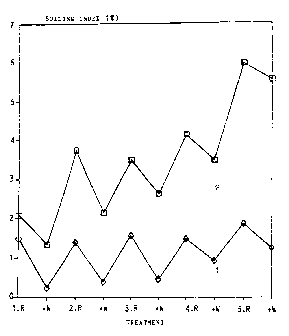Some of the information on this Web page has been provided by external sources. The Government of Canada is not responsible for the accuracy, reliability or currency of the information supplied by external sources. Users wishing to rely upon this information should consult directly with the source of the information. Content provided by external sources is not subject to official languages, privacy and accessibility requirements.
Any discrepancies in the text and image of the Claims and Abstract are due to differing posting times. Text of the Claims and Abstract are posted:
| (12) Patent: | (11) CA 2122372 |
|---|---|
| (54) English Title: | SOIL-REPELLENT MONOFILAMENT FOR PAPER MACHINE WIRE-CLOTHS, PRODUCTION THEREOF AND USE THEREOF |
| (54) French Title: | MONOFILAMENT ANTISALISSURE POUR LES FILTRES EN TISSU DES MACHINES A PAPIER, PRODUCTION ET UTILISATION |
| Status: | Expired and beyond the Period of Reversal |
| (51) International Patent Classification (IPC): |
|
|---|---|
| (72) Inventors : |
|
| (73) Owners : |
|
| (71) Applicants : |
|
| (74) Agent: | GOWLING WLG (CANADA) LLPGOWLING WLG (CANADA) LLP |
| (74) Associate agent: | |
| (45) Issued: | 2003-03-25 |
| (86) PCT Filing Date: | 1993-08-17 |
| (87) Open to Public Inspection: | 1994-03-17 |
| Examination requested: | 1999-11-23 |
| Availability of licence: | N/A |
| Dedicated to the Public: | N/A |
| (25) Language of filing: | English |
| Patent Cooperation Treaty (PCT): | Yes |
|---|---|
| (86) PCT Filing Number: | PCT/CH1993/000206 |
| (87) International Publication Number: | WO 1994005835 |
| (85) National Entry: | 1994-04-27 |
| (30) Application Priority Data: | ||||||
|---|---|---|---|---|---|---|
|
The dirt-repellent monofilament with a toughness of at least 36 cN/tex and an
extension of under 44 % has a soiling index
AI > 2 after five soiling and cleaning cycles. To manufacture the dirt-
repellent monofilaments, a copolymer with a melting point
of 255 to 275 ° C and consisting of alkenes and monofilament is added
to a polymer melt of polyethylene terephthalate before
extrusion. The dirt-repellent monofilament is advantageously used in the
manufacture of cleaning filters for the dry section of a
paper machine, i.e. paper machine fabric filters. It may also be used to
produce fabrics for general use as technical fabrics which
have to be cleaned in difficult conditions.
Note: Claims are shown in the official language in which they were submitted.
Note: Descriptions are shown in the official language in which they were submitted.

2024-08-01:As part of the Next Generation Patents (NGP) transition, the Canadian Patents Database (CPD) now contains a more detailed Event History, which replicates the Event Log of our new back-office solution.
Please note that "Inactive:" events refers to events no longer in use in our new back-office solution.
For a clearer understanding of the status of the application/patent presented on this page, the site Disclaimer , as well as the definitions for Patent , Event History , Maintenance Fee and Payment History should be consulted.
| Description | Date |
|---|---|
| Time Limit for Reversal Expired | 2005-08-17 |
| Letter Sent | 2004-08-17 |
| Letter Sent | 2003-10-10 |
| Grant by Issuance | 2003-03-25 |
| Inactive: Cover page published | 2003-03-24 |
| Inactive: Final fee received | 2003-01-07 |
| Pre-grant | 2003-01-07 |
| Notice of Allowance is Issued | 2002-07-17 |
| Notice of Allowance is Issued | 2002-07-17 |
| Letter Sent | 2002-07-17 |
| Inactive: Approved for allowance (AFA) | 2002-07-09 |
| Amendment Received - Voluntary Amendment | 2002-04-12 |
| Inactive: S.30(2) Rules - Examiner requisition | 2001-12-12 |
| Inactive: Status info is complete as of Log entry date | 1999-12-13 |
| Letter Sent | 1999-12-13 |
| Inactive: Application prosecuted on TS as of Log entry date | 1999-12-13 |
| All Requirements for Examination Determined Compliant | 1999-11-23 |
| Request for Examination Requirements Determined Compliant | 1999-11-23 |
| Inactive: Multiple transfers | 1999-11-23 |
| Application Published (Open to Public Inspection) | 1994-03-17 |
There is no abandonment history.
The last payment was received on 2002-06-13
Note : If the full payment has not been received on or before the date indicated, a further fee may be required which may be one of the following
Please refer to the CIPO Patent Fees web page to see all current fee amounts.
| Fee Type | Anniversary Year | Due Date | Paid Date |
|---|---|---|---|
| MF (application, 4th anniv.) - standard | 04 | 1997-08-18 | 1997-06-11 |
| MF (application, 5th anniv.) - standard | 05 | 1998-08-17 | 1998-06-30 |
| MF (application, 6th anniv.) - standard | 06 | 1999-08-17 | 1999-06-01 |
| Request for examination - standard | 1999-11-23 | ||
| MF (application, 7th anniv.) - standard | 07 | 2000-08-17 | 2000-06-22 |
| MF (application, 8th anniv.) - standard | 08 | 2001-08-17 | 2001-08-03 |
| MF (application, 9th anniv.) - standard | 09 | 2002-08-19 | 2002-06-13 |
| Final fee - standard | 2003-01-07 | ||
| MF (patent, 10th anniv.) - standard | 2003-08-18 | 2003-08-01 |
Note: Records showing the ownership history in alphabetical order.
| Current Owners on Record |
|---|
| RHONE-POULENC VISCOSUISSE SA |
| Past Owners on Record |
|---|
| ERWIN LERCH |
| HALIM BARIS |